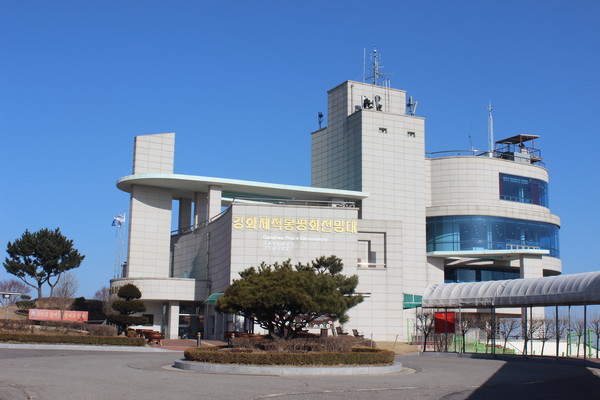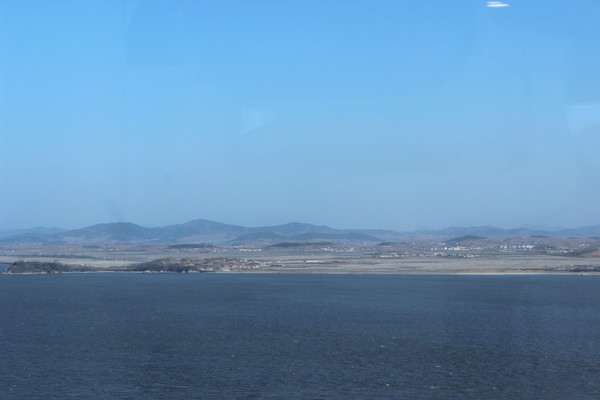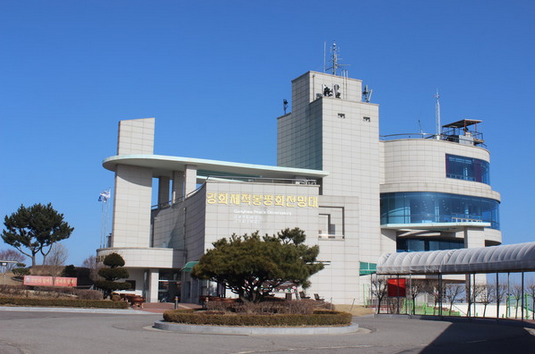- Into the Allures of Ganghwa Island April 24, 2024
-
Ganghwa's eclectic charms
EXCURSIONS ARE always special. At the start of the semester, before the commencement of midterm exams, I went on a short trip to Ganghwa Island. Ganghwa Island is a charming place with many attractions. It is located in the northwestern region of Seoul, just across from North Korea, and has always acted as a waterway entrance to Seoul. This unique location has allowed numerous historic events to happen on this small island, making the island familiar to any who attended Korea’s history lessons.
Ganghwa Peace Observatory
I began my journey at the far north end of the island. Established in 2008, the Ganghwa Peace Observatory is the closest place that a civilian can go to observe the lives of North Koreans[1]. On the way to the observatory, the driver’s identification card is inspected at a checkpoint, as the observatory is located in the northern part of the Civilian Control Line. As I toured the observatory, I realized there were more visitors than I expected. I acutely felt people’s yearnings for a peaceful unification, as well as a general air of curiosity about North Korea. On the observation platform, I was able to view North Korea up close through a telescope. Just across the narrow sea, the mountains were bare, as North Koreans had cut down all the trees in the mountains to use them as firewood. North Korean villages were also visible. It was fascinating and slightly unsettling to be able to witness a country so close, and yet so distant. PHOTOGRAPHED BY KO YU-MIN
PHOTOGRAPHED BY KO YU-MIN PHOTOGRAPHED BY KO YU-MIN
PHOTOGRAPHED BY KO YU-MINGanghwa Dolmen Sites
How many times do you think you will be able to see dolmens throughout your life? Well, this was my first. Numerous historic artifacts remain to this day telling visitors stories of their days in Ganghwa Island, but this would definitely be the most ancient relic. It was an unusually chilly day, but the cold could not take away the awe I felt. Dolmens are funerary monuments from the prehistoric megalithic culture constructed of large stones. Although they are widespread throughout the world, they are primarily found in East Asia, particularly in South Korea. The Gochang, Hwasun, and Ganghwa Dolmen Sites were included in the United Nations Educational, Scientific and Cultural Organization (UNESCO) World Heritage List in December of 2000. The Ganghwa Dolmen site comprises 160 dolmens and the one I visited was the largest, most representative table-style dolmen, reaching a staggering height of 2.454 meters and 6.399 meters in length. As they provide insight into prehistoric culture alongside offering further context for understanding the social structure, political system, and religious beliefs of the people of the time, dolmens are a valuable source for prehistoric research. Near the Dolmen Site, Ganghwa Natural History Museum and Ganghwa History Museum are also located, giving visitors a chance to examine the natural and human history of the region.This article was contributed by Yonsei University's student-led English monthly, The Yonsei Annals, written by its reporter Ko Yu-min.
Read the full article at the Yonsei Annals' website: http://annals.yonsei.ac.kr/news/articleView.html?idxno=11202
show mobile menu
mobile menu




